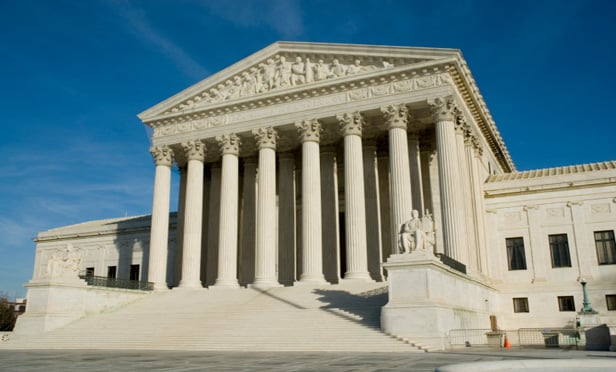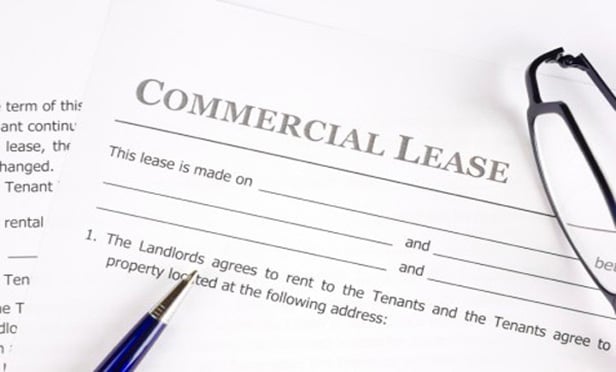Features

The Ripple Effect of Rejecting Trademark Licenses
<b><i>The First Circuit Widens the Controversy</b></i><p>In <i>In re Tempnology</i>, the First Circuit held that the debtor's rejection of a trademark license strips the nondebtor licensee of any right to continue to use the trademarks. In so doing, the court takes the same approach as the Fourth Circuit and rejects the approaches advocated by the Third and Seventh Circuits.
Features

SCOTUS: No Safe Harbor Protection Where Financial Institutions are Mere Intermediaries
The Supreme Court's decision and analysis are instructive for both bankruptcy and corporate practitioners, and will likely yield significant returns for estate beneficiaries.
Features

A Cautionary Tale for Lender Overreaching into Bankruptcy Remoteness
<b><i>In re Lexington Hospitality Group, LLC</b></i><p>Bankruptcy remote structures are often used to protect against the impact of default under a credit facility. A common mechanism is organizational documents requiring an outside director or member's vote to authorize a bankruptcy filing. However, the United States Bankruptcy Court for the Eastern District of Kentucky found that such a requirement implemented at the behest of a lender, among other bankruptcy restrictions, and where there was not true independence frustrated the important federal public policy of favoring fresh starts in bankruptcy.
Features

Offshore Restructuring Outlook
The first quarter of 2018 has seen the Dow and NASDAQ pushing through record highs, increasing consumer confidence in the U.S. and Europe. However, there are segments in the market that are expected to need continued restructuring work, both onshore and offshore through 2018, particularly: offshore oil and gas drillers; European and U.S. retail; and the highly leveraged Chinese real estate sector.
Features

What Retailers Can Learn from Recent Bankruptcies
Understanding the factors leading up to these bankruptcies, as well as the strategies used by retailers to emerge from bankruptcy, can give retailers significant knowledge about trends in consumer spending and how retailers can improve their overall positions going forward.
Features

Serving Two Masters: When 'Bankruptcy Remote' Meets Public Policy
<i><b>How Lenders to BREs Can Reduce the Risk of Debtor Bankruptcy Without Compromising Public Policies</b></i><p>Structured financing transactions, including those pertaining to commercial real estate, make extensive use of entities formed for the specific purpose of reducing the likelihood that assets will be involved in a potential bankruptcy proceeding. Known as “bankruptcy-remote entities,” or “BREs,” these entities are subject to structures and covenants in financing documents and their own formation documents, which are designed to reduce the likelihood that the BRE will file for bankruptcy protection.
Features

Anti-Forfeiture Statute Saves a Debtor's Exercise of Option to Renew Lease
In a recent decision, Bankruptcy Judge Christopher S. Sontchi addressed the question of whether a Chapter 11 debtor, the tenant under a commercial lease, could exercise an option to renew the lease during the bankruptcy proceedings, even though the debtor was in default under the lease and the lease specified that it could not be renewed if defaults existed at the time the option was exercised.
Features

Bankruptcy Venue Reform Bill Introduced
On Jan 8, 2018, Senators John Cornyn (R-TX) and Elizabeth Warren (D-MA) introduced the Bankruptcy Venue Reform Act of 2018, which is designed to prevent forum shopping in Chapter 11 bankruptcy cases, a practice that has resulted in a concentration of bankruptcy cases in a few districts.
Features

Recovering Administrative Claims in Chapter 9 Bankruptcy and Title III of PROMESA
Municipal bankruptcies under Chapter 9 of the Bankruptcy Code are rare. These cases are often filed to adjust bonded indebtedness and pension obligations. Congressional authorization for Puerto Rico and its instrumentalities to file for bankruptcy under the Puerto Rico Oversight, Management, and Economic Stability Act (PROMESA) was similarly out of concern for excessive bond debt and pensions.
Need Help?
- Prefer an IP authenticated environment? Request a transition or call 800-756-8993.
- Need other assistance? email Customer Service or call 1-877-256-2472.
MOST POPULAR STORIES
- Delaware Chancery Court Takes Fresh Look At Zone of InsolvencyOver a decade ago, a Delaware Chancery Court's footnote in <i>Credit Lyonnais Bank Nederland, N.V. v. Pathe Communications</i>, 1991 WL 277613 (Del. Ch. 1991), established the "zone of insolvency" as something to be feared by directors and officers and served as a catalyst for countless creditor lawsuits. Claims by creditors committee and trustees against directors and officers for breach of fiduciary duties owed to creditors have since become commonplace. But in a decision that may have equally great repercussion both in the Boardroom and in bankruptcy cases, the Delaware Chancery Court has revisited zone-of-insolvency case law and limited this ever-expanding legal theory.Read More ›
- The DOJ's Corporate Enforcement Policy: One Year LaterThe DOJ's Criminal Division issued three declinations since the issuance of the revised CEP a year ago. Review of these cases gives insight into DOJ's implementation of the new policy in practice.Read More ›
- The Right to Associate in the DefenseThe "right to associate" permits the insurer to work with the insured to investigate, defend, or settle a claim. Such partnerships protect the insurer and can prove beneficial to the insured's underlying case and ultimate exposure.Read More ›
- Ransomware – COVID-19 & Upgrading Your DefensesIt's pretty shameful that in the current crisis we're seeing ransomware on the rise. It's even more shameful that organizations involved in fighting the virus seem to be especially at risk.Read More ›
- Use of Deferred Prosecution Agreements In White Collar InvestigationsThis article discusses the practical and policy reasons for the use of DPAs and NPAs in white-collar criminal investigations, and considers the NDAA's new reporting provision and its relationship with other efforts to enhance transparency in DOJ decision-making.Read More ›

